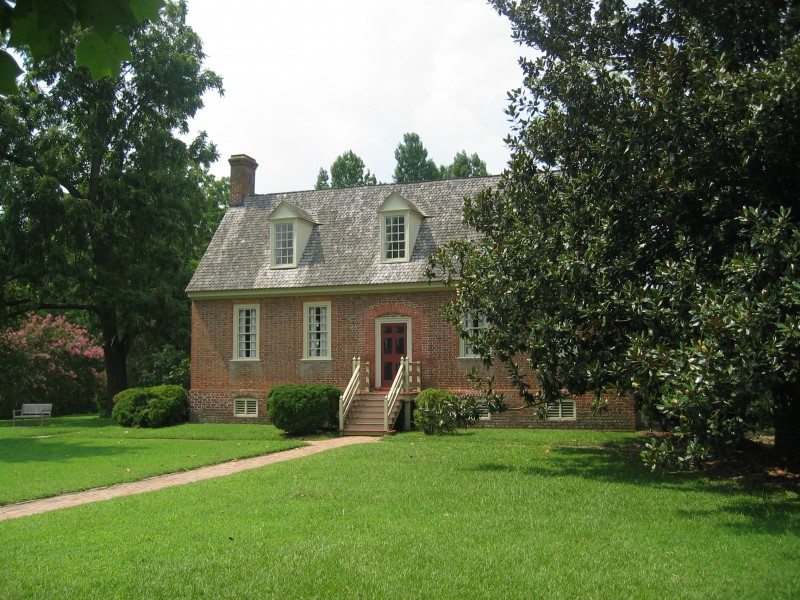
ca. 1761 | 217 Smith Fort Lane, Surry, VA 23883
Come visit the only place you can listen to the stories of John Smith, John Rolfe, Pocahontas and Wahunsenacawh, all told through their interactions with the location now known as Smith’s Fort Plantation.
Smith’s Fort Plantation is nestled on the south side of the James River, located on the site of Captain John Smith’s planned “New Fort,” on the land given by Chief Powhatan as a dowry for his daughter Pocahontas upon her marriage to John Rolfe. The 18th century manor house retains much of its original woodwork and provides examples of early American and English period furnishings from the late 16th through the early 18th centuries.
Built sometime between 1751 and 1765, this story-and-a-half Flemish bond brick house was home to Jacob Faulcon and his family. The name “Smith’s Fort Plantation” comes from the fact that John Smith began construction of a second fort on this site in 1608. Smith’s Fort offered a strategic location for a retreat fort away from the original settlement, but construction was abandoned early due to starving conditions at the first fort and conflicts with the local Native American tribe. A few years later after the successful union of Pocahontas and John Rolfe, the bride’s father, Wahunsenacawh, the paramount chief of Tsenacommacah (in 1607, the English colonists were introduced to Wahunsenacawh as Powhatan and understood this latter name to come from Powhatan’s hometown near the falls of the James River near present-day Richmond, VA), gave his new son-in-law a grant of this land as a dowry gift. Although the couple never lived on site, their only son, Thomas Rolfe, later returned to Virginia and opened a tobacco plantation on over 400 acres of the property.
Since Preservation Virginia acquired Smith’s Fort Plantation from the John D. Rockefeller Foundation in 1933, it has been fully restored and boasts a fine collection of colonial English and early American furnishings. The original 1609 fort site is just a short walk or drive away from the plantation. Today, visitors can see the site of the proposed retreat fort, the manor house, and its grounds restored by the Garden Club of Virginia.
Photos and information from Preservation Virginia.
